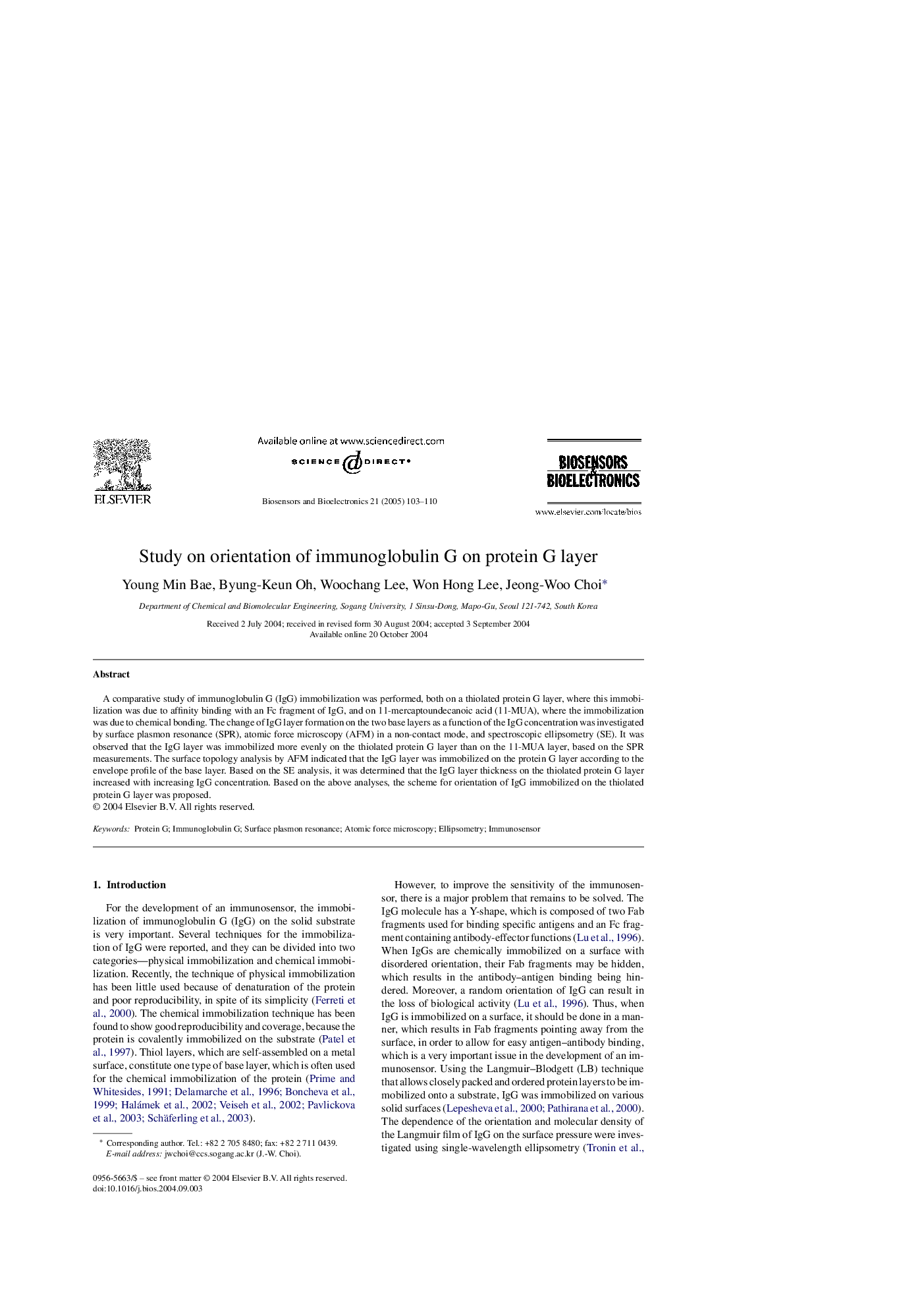| Article ID | Journal | Published Year | Pages | File Type |
|---|---|---|---|---|
| 10429876 | Biosensors and Bioelectronics | 2005 | 8 Pages |
Abstract
A comparative study of immunoglobulin G (IgG) immobilization was performed, both on a thiolated protein G layer, where this immobilization was due to affinity binding with an Fc fragment of IgG, and on 11-mercaptoundecanoic acid (11-MUA), where the immobilization was due to chemical bonding. The change of IgG layer formation on the two base layers as a function of the IgG concentration was investigated by surface plasmon resonance (SPR), atomic force microscopy (AFM) in a non-contact mode, and spectroscopic ellipsometry (SE). It was observed that the IgG layer was immobilized more evenly on the thiolated protein G layer than on the 11-MUA layer, based on the SPR measurements. The surface topology analysis by AFM indicated that the IgG layer was immobilized on the protein G layer according to the envelope profile of the base layer. Based on the SE analysis, it was determined that the IgG layer thickness on the thiolated protein G layer increased with increasing IgG concentration. Based on the above analyses, the scheme for orientation of IgG immobilized on the thiolated protein G layer was proposed.
Keywords
Related Topics
Physical Sciences and Engineering
Chemistry
Analytical Chemistry
Authors
Young Min Bae, Byung-Keun Oh, Woochang Lee, Won Hong Lee, Jeong-Woo Choi,
